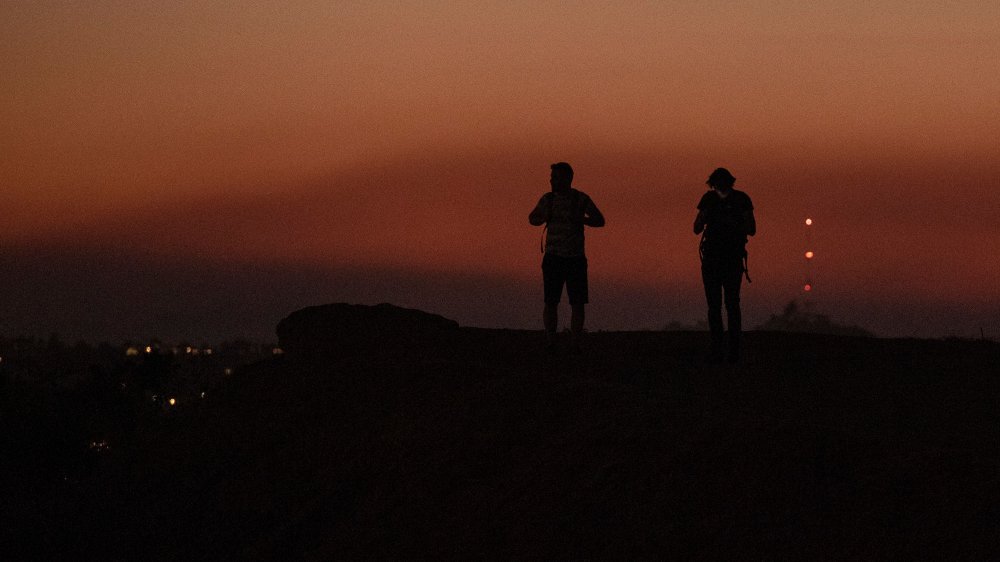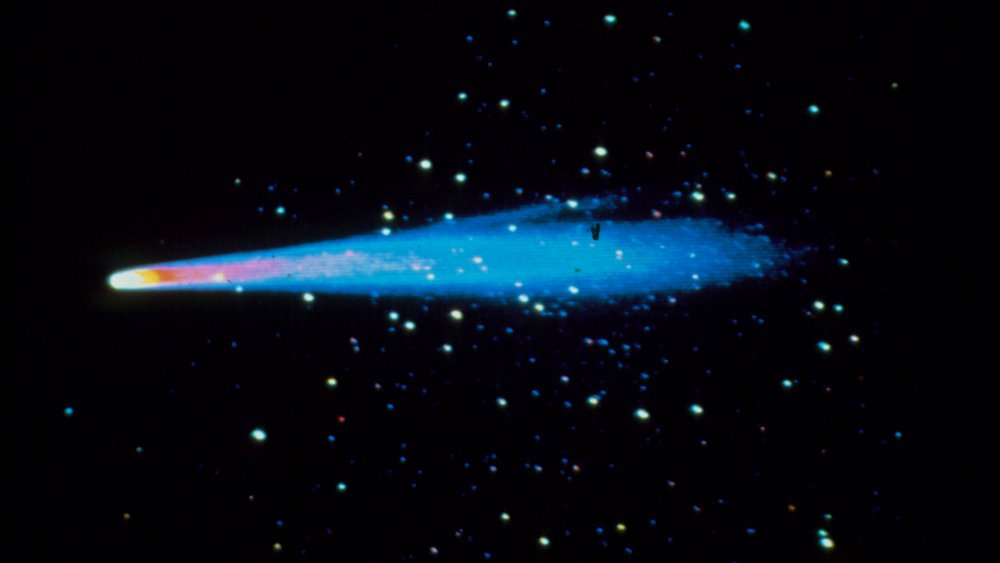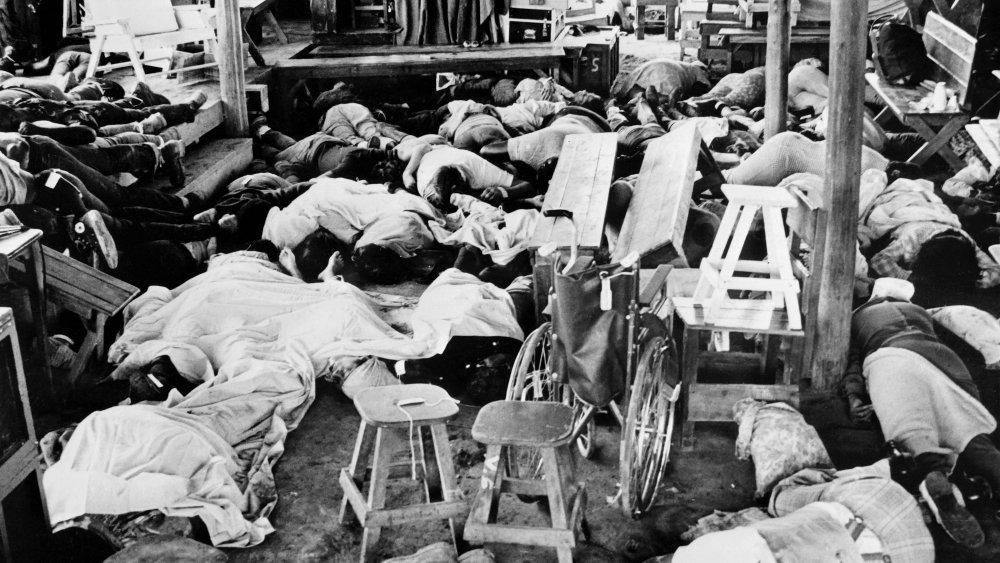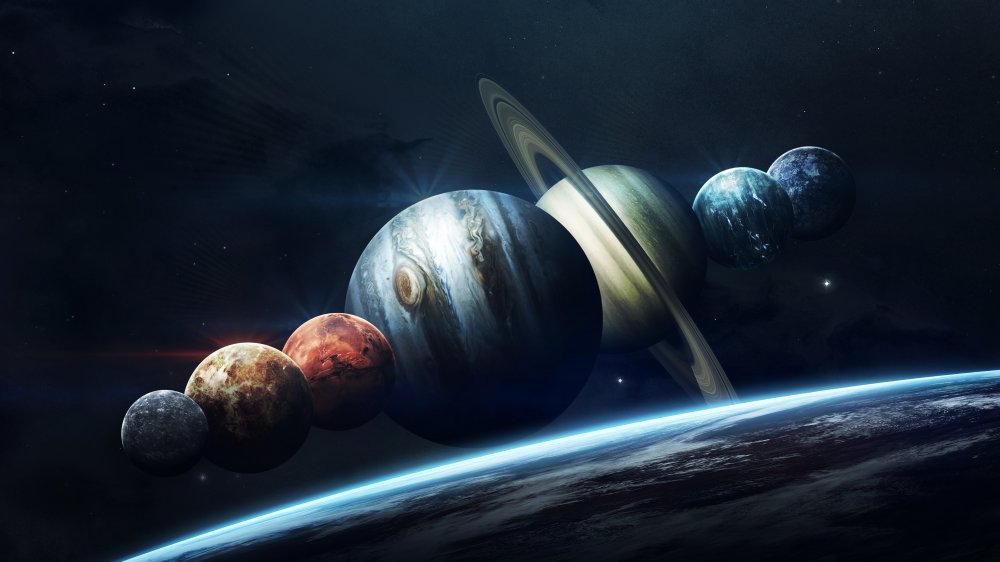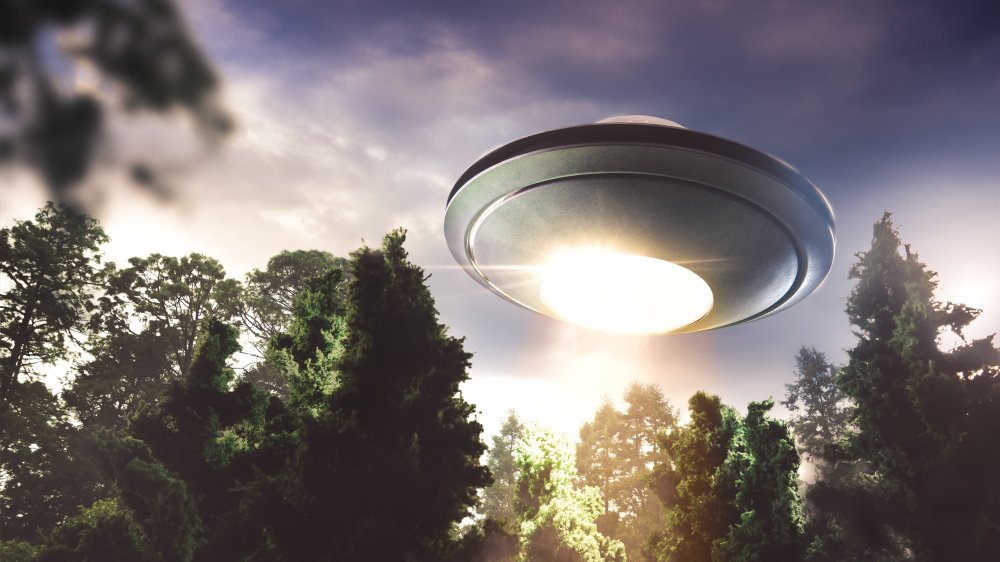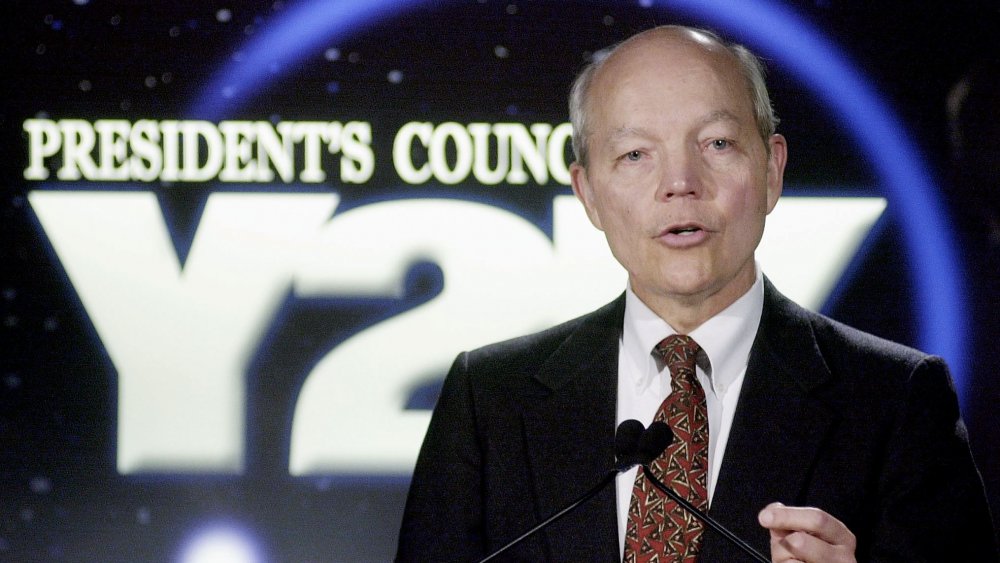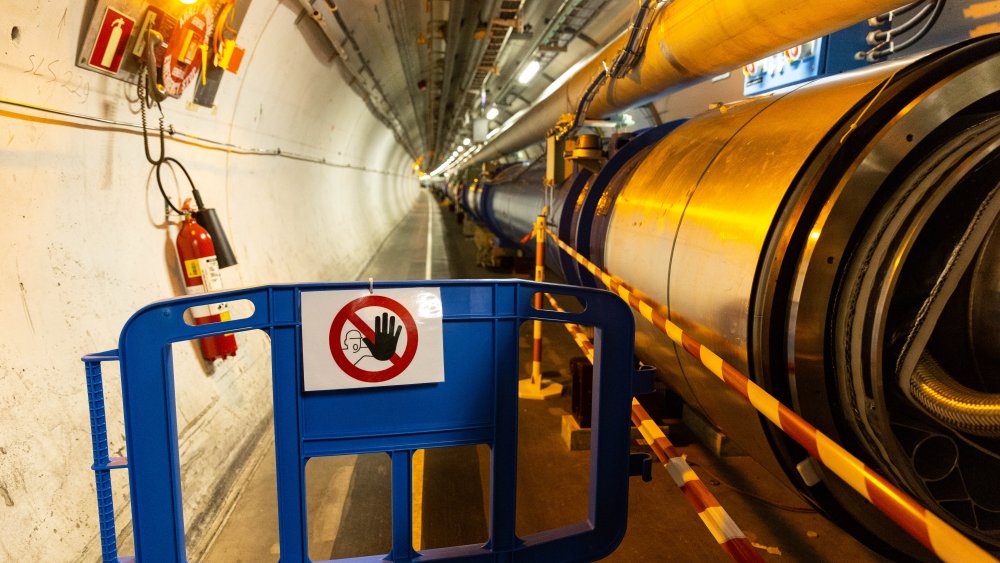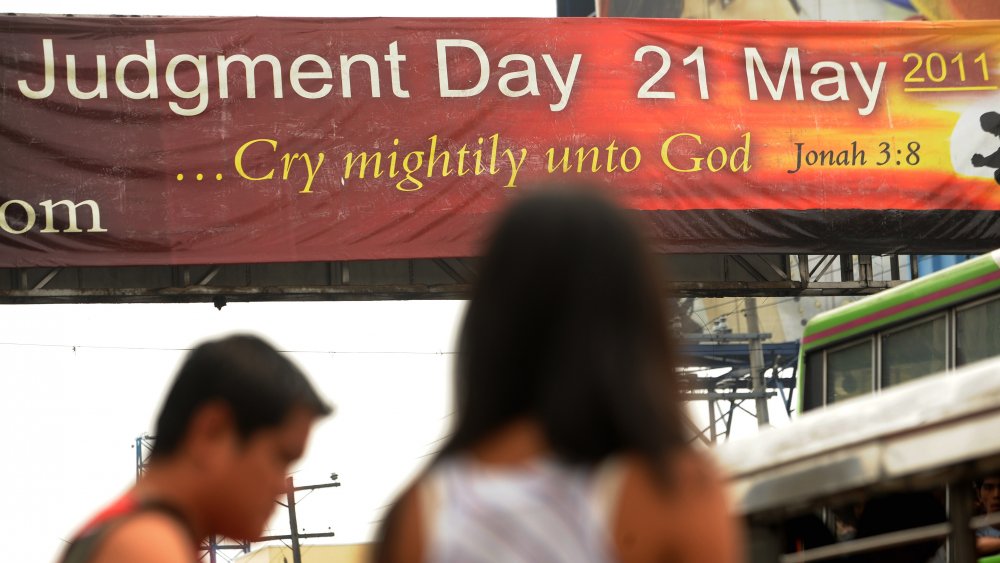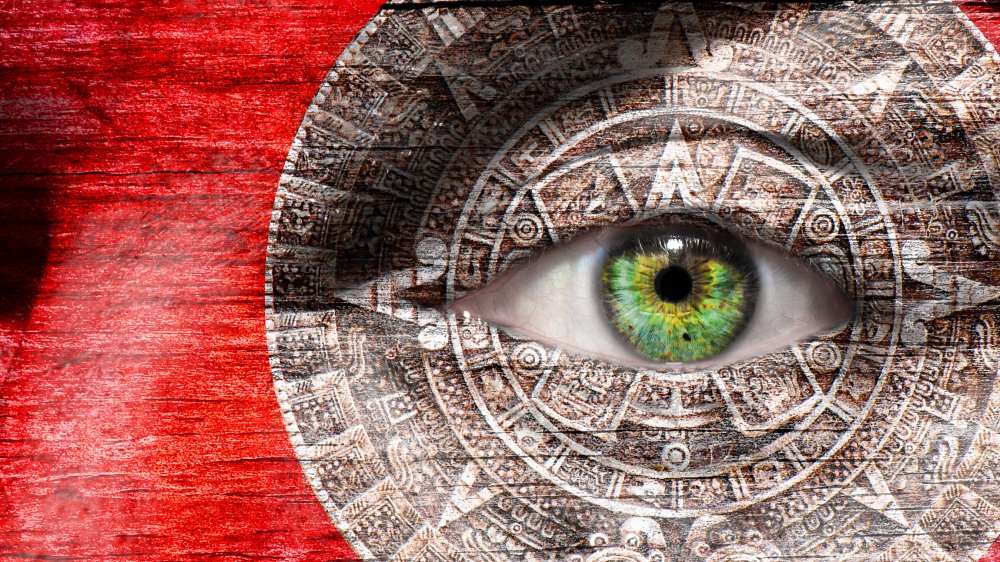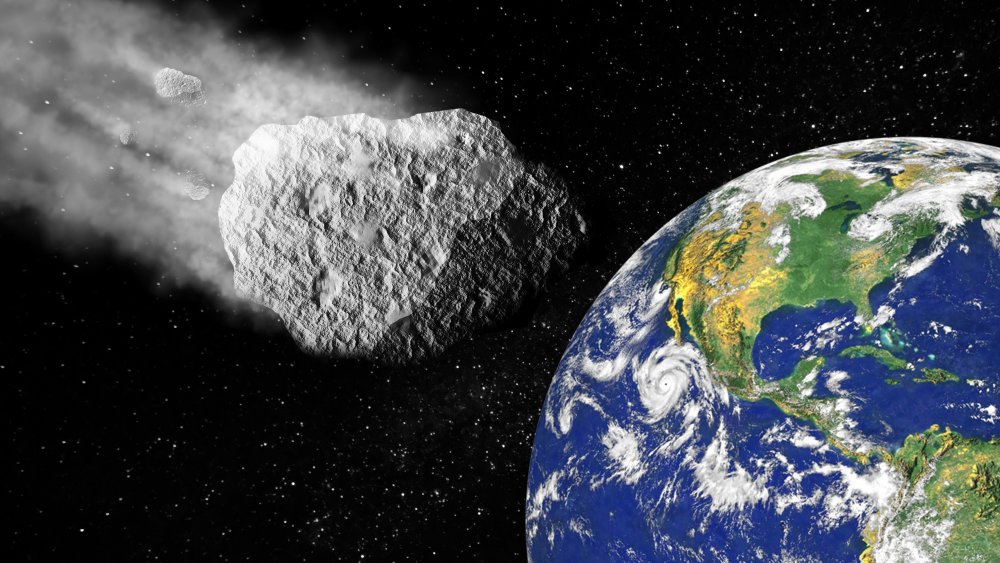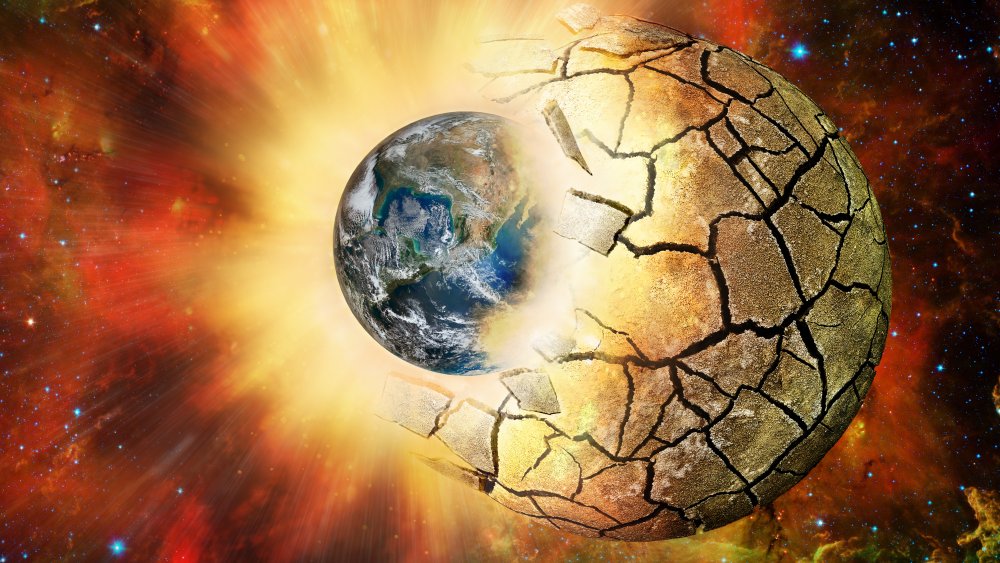Doomsdays That Didn't Happen
The end is nigh. Or, at least, that's what the guy standing on the street corner says, and it's why the doomsday preppers are always hoarding canned food in their basements. It sure seems like every few months, yet another "end times" scenario hits the news. Asteroid hurtling toward Earth? Been there. Somebody's shouting how God is going to punish everybody for the sins of the world? Yawn, get in line. Zombie apocalypse? Hey, at least that one has a bit of pizzazz.
Now, to be fair, human extinction shouldn't be entirely ruled out. Between climate change and the possibility of nuclear war, humans are never too far away from stupidly wiping themselves off the planet. However, while people dismiss these all-too-real threats as silly, they instead get riled up every time a new pseudo-scientific or pseudo-religious scenario is dreamed up by some crank. Think this is a recent phenomenon? Nah, unfortunately, history shows that this nonsense has happened for centuries.
Think Noah's flood was bad? It was supposed to happen again
So-called "catastrophic floods" are another one of those real phenomena people used to think were fake, but while these natural disasters probably inspired a certain Genesis tale, the notion of a single flood drowning the whole planet is a bit unrealistic. Nonetheless, historian Lydia Barnett writes that back in 1499, two German astrologers named Johannes Stöffler and Jacob Pflaum publicized the rather horrifying prediction that, come the year 1524, Noah's flood would come roaring back to life. To make matters worse, these dudes weren't alone in their fear mongering: down in Italy, the astrologer Luca Gaurico made a similar guess, and predictably enough, a popular preached backed him up. Bye bye, human race!
People freaked out, of course. Some wealthy fella in France paid people build him an ark (conveniently forgetting that ol' "eye of a needle" thing, eh?), and Romans fled to the highest floors of their houses. Because God can't see your attic, right? Doomsday pamphlets spread like wildfire. Catholics blamed Lutherans. And, according to the Smithsonian, boatbuilders profited like gangbusters.
Then, 1524 arrived, and it ended up being a drought year. Oops. A little sprinkling of rain did fall on the predicted date of February 20th, but definitely no Genesis-style flood. Soon afterward, the people in the streets broke out in wild ... no, not celebrations, but riots. Violent riots, too, killing hundreds of bystanders. Because there's nothing more disappointing than when doomsday becomes just a regular Tuesday, evidently.
Black skies over New England foretold doomsday
The so-called "Dark Day of 1780" sounds like the title of a folk metal album, but it was actually just a particularly unpleasant morning in New England. This whole shebang happened around 8:00 AM on May 19th, 1780, according to History, when everybody's farm chores were interrupted by a foreboding mass of rust-colored clouds blotting out the sun. The skies dimmed. New England went dark. Even at lunchtime, people had to use candles, presumably alongside a stiff glass of booze. It was some legitimately scary stuff.
Today, people would blame flying saucers, but back in the 1700s, the highly superstitious population tended to blame creepy happenings on the devil, which is exactly what happened here. Clearly, the Dark Day must have been the Day of Judgment, right? Even when the darkness cleared and daylight returned, people swarmed their parishes in an apocalyptic mania. The Shakers were one group that definitely used the Dark Day to their advantage, as Indiana University's Stephen J. Stein points out, picking up many new followers.
In reality, though, why did the sky go dark? While there are numerous theories, according to the BBC, the most accepted explanation is forest fires. This is supported by evidence of fire-scarred rings in New England tree trunks dating back to that period. If you think that sounds far-fetched, just remember how apocalyptic all those California wildfires looked, and imagine how scary it would be to see that in 1780, without any scientific explanation.
Halley's comet got people buzzing about doomsday
No matter what era you live in, a doomsday scenario will always come along to punch the panic button. In the early days of the 20th century, for instance, people got really concerned about the fact that Halley's comet was going to be circling back around in 1910. Why? Because, according to the Guardian, the Yerkes Observatory had detected a toxic substance called cyanogen in the comet's tail. This bait was seized by a French astronomer named Camille Flammarion, who proceeded to warn the populace that when this gaseous poison passed by Earth on May 19th, all life would be extinguished.
People had strong feelings about the end of humanity, as you'd expect. Churches held all-night prayer vigils. Snake oil salesman sold useless "comet pills," while people stuffed their keyholes to prevent poison gas from getting inside, and according to Wired, hordes of doomsday preppers bought their own gas mask. When the comet finally passed through the heavens, and nobody died, some people still claimed to have smelled the gas ... because, you know, confirmation bias. However, once it was clear that Flammarion's prediction wasn't going to happen, it seems that the people of Paris threw one hell of a post-apocalypse party in the streets. And hey, good for them.
Anyhow, it's currently predicted that Halley's Comet will loop back around in 2061. Maybe people can control themselves a little better, this time?
Jim Jones readied his followers for a nuclear doomsday catastrophe
Before Jim Jones became a homicidal Christian cult leader, he was a deeply disturbed human being with dark predictions about the future. Even as a child, according to Rolling Stone, he was known to perform cruel experiments on animals, and as an adult, he tapped into the public's growing fears of the U.S. government — and the massive social upheavals of the time — to gather hundreds of people into his church, dubbed the People's Temple. One of the hooks that Jones used to migrate his congregation to California, as it happens, was yet another failed doomsday prophecy: Jones announced that nuclear warfare would decimate the population on July 15th, 1967. Jones claimed that he would be the Moses of this new age, so people followed him, because they viewed his leadership as their guiding light through the impending atomic devastation.
Obviously, that date came and went. However, the apocalyptic overtones remained. At least one former member who joined Jones' church in 1970 says that, even then, Jones was still doomsaying about a future nuclear wipeout, according to the BBC. This eventually led to the horrific Jonestown incident in 1978, wherein Jones manipulated his followers into taking cyanide-laced fruit punch — claiming that, if they didn't, the Guyanese military would slaughter their children — an action which led to the deaths of over 900 people.
The Jupiter Effect says goodbye to Los Angeles
Every 179 years, all the planets in the Milky Way line up on one side of the sun. Pretty cool? You bet. Unfortunately, there's always somebody who spazzes out about cosmic phenomena, and in 1974, that was two dudes with a lousy prediction, according to Mental Floss. As told by astronomer Stephen Plagemann and astrophysicist John Gribbin in their bestselling book The Jupiter Effect, the upcoming interplanetary alignment on March 10th, 1982 was going to cause sweeping floods, earthquakes, tidal waves, and other natural disasters of the sort Roland Emmerich loves to make movies about. The book's boldest prediction was that when the Jupiter Effect arrived, an apocalyptic earthquake along the San Andres fault would turn Los Angeles into a pile of rubble. So long, Venice Beach. Bye-bye, Hollywood sign. Nice to know ya, Calif ...
Oh, wait. Los Angeles is still there? Right, because the Jupiter Effect was nonsense. Immediately upon the book's publication, scientists tore into its logical fallacies like lions surrounding a fresh kill. Unfortunately, people still spent nearly a decade worried that the end may be nigh, only to settle down once the fateful alignment date had passed. By then, even the original authors tried to excuse themselves by claiming the eruption of Mount St. Helens in 1980 was the true Jupiter Effect in action. More like the "Cop-Out Effect," huh?
The sixth tribulation of 1998 ... wasn't a tribulation
Cults and doomsdays go together like peanut butter and jelly, and this predictable saga played out yet again in 1998, as described by the Dallas Observer, when a guy named Hon-Ming Chen formed the God's Salvation Church. This group's belief system, which mixed up Ufology, Christianity, Buddhism and Taoism into a truly bizarre cocktail, hinged on the notion that the world had survived five calamitous "tribulations" — the first one having been, uh, a war between dinosaurs in the Middle East — and that the sixth tribulation was coming. To survive it, Hon-Ming Chen's followers in Taiwan had to journey to his new home in Garland, Texas, so that when God reappeared in the flesh on March 31st, 1998 — preceded by him taking over live TV on March 25th, to announce his arrival — the big man would beam all the true believers into his flying saucer, so they could flee the Earth's destruction. Believe it or not, the BBC reported that over 2,000 followers flew to Texas, so they could be there for the great space rapture.
To Hon-Ming Chen's credit, according to the Associated Press, when God didn't make his promised March 25th television debut, he conceded defeat instead of doubling down like doomsayers and demagogues tend to do. As he explained, "Because we did not see God's message on television tonight, my predictions of March 31 can be considered nonsense." Well said, sir.
Oh God, here comes Y2K
If you were alive back in 1999, the term Y2K brings about snickers of recollection ... or, perhaps, repressed memories of sitting in cold basement eating equally cold spam. As for younger readers, who probably feel like this is some weird old person's inside joke nobody wants to talk about, here's the deal: back in the sixties, according to National Geographic, early programmers inputted dates into computer systems using only the last two digits: I.E., 66, 84, et cetera. So, when the big ol' year 2000 came around — or put simply, Y2K — lots of people grew concerned it might wreak havoc with every computer on the planet, since the year would be interpreted as 1900, rather than 2000. To be clear, this was a real big deal, because the so-called Y2K bug would've caused genuine problems for industries like banks, airlines, and power plants, which depend on being programmed with accurate dates.
The United States spent millions of dollars to fix all their software. Obviously, things worked out fine ... but down on the streets, "Millennium Bug" anxiety reached fever pitch, as people were concerned unforeseen hazards might erupt. Some people thought all computers would go kaput. Others feared nuclear missiles would launch. That's why, as Time Magazine recalls, people stockpiled canned goods, holed up in bunkers, bought generators, trained at wilderness survival boot camps, and hunkered down with the aforementioned cold spam.
You think this sounds ridiculous? Well, as old-timers always say, you had to be there.
Beware the Large Hadron Collider, it'll kill us all!
Religious doomsdays are run-of-the-mill, but 2008's non-catastrophe fit more cleanly into the science fiction genre. That year, according to Time Magazine, the world was "menaced" by a gargantuan, $6 billion particle accelerator in Geneva, dubbed the Large Hadron Collider. Why all the fuss? Because the LHC was designed to smash protons against each other and recreate the aftereffects of the Big Bang, for the sake of scientific study ... which, in all fairness, is the sort of "science run amok" experiment that, in the Marvel Universe, would probably create a supervillain. Sure enough, people got riled up by a questionable "theory" when the LHC got switched on September 10th, it would spawn an infinitely expanding black hole, which would then devour the universe. Chomp!
For the record, this is impossible. Even if real black holes had been created (already a slim chance, by the way), they would've been wiped out by something called Hawking radiation ... which, yes, is named after the very Hawking you're thinking of. Unfortunately, these real science facts are confusing, whereas the "black hole will eat us all" theory is supported by every science fiction movie ever, so you can't blame people for being concerned. So people woke up with bated breath on September 10th, 2008, and according to the Telegraph, breathed a massive sigh of relief when the Large Hadron Collider turned on, no black holes were formed, and no Hell Knights came tumbling from the ether.
Harold Camping makes lucrative amounts of money off the Rapture
Remember that strange old man who kept proclaiming the biblical "rapture" was coming? He was a televangelist named Harold Camping, according to the New York Times, and you'll recognize him from the oodles of money he spent on rapture-crazed advertising: over 5,000 billboards across the country, countless media appearances, and numerous books, all telling people that only good Christians like him would be saved from the end of the world. Yadda, yadda, yadda. Camping did this for the first time in 1988, repeated himself in 1994, came back around in 2009, and he even did it twice in 2011.
Lest you think this is a laughing matter — or that his concerns were genuine — Vice points out he was the sort of person who apologetically capitalized on people's fears. Camping made big bucks when people donated their live savings to his cause, and one former employee describes Camping laughing about it when a now-bankrupt follower begged for their money back. Even worse, some of Camping's followers committed tragic, violent, and/or terrible actions because of his prophecies: at least one man jumped off a building, while a devoted mother murdered her two young daughters, so they wouldn't see the apocalypse. Horrifying stuff, yet Camping kept the charade going.
Following the two failed predictions of 2011, though, Camping's organization started sliding downhill. In 2013, he died from a bad fall at the age of 92.
The Mayan calendar isn't about doomsday, guys
Yes, the ancient Mayans were crazily advanced. So advanced, arguably, that modern civilization looks dumb in comparison. And yes, one version of the Mayan calendar ends in the year 2012. However, that closure doesn't carry the meaning you — nor all those people who panicked about these shenanigans — think it does.
As NASA explains, the Mayan calendar never made any prophecies about the end of the world. Just like the calendar on your wall has to end somewhere (most likely on December 31st, right?), one particular Mayan calendar monument ends in 2012 ... because, honestly, everybody has to stop at some point. Furthermore, according to National Geographic, this calendar positioned 2012 not as the date of some fiery extinction, but rather, a period of joyous rebirth before the next cycle could begin. So, if you wanted to more appropriately celebrate the infamous date of December 21st, 2012, you should've been dancing your butt off, downing shots, or perhaps joining the crowd of thousands who celebrated the occasion at the ancient Mayan city of Chichen Itza, according to CBS, instead of hunkering down in some cold bunker and reliving your worst Y2K memories.
Doomsday just like the dinosaurs did it
Ah, another year, another judgement day. In 2015, the new doomsayer was the so-called "prophet" Efrain Rodriguez, according to Forbes, and his medium of choice was (what else?) YouTube. Rodriguez claimed to have seen a vision wherein a monstrous asteroid was going to smash smack dab into Puerto Rico at 2:00 AM, on an unspecified date that year, initiating an apocalyptic earthquake that would decimate the Americas. Vague, huh? No worries, because other YouTube wizards picked up the slack, until everybody corralled around mid-to-late September as the likely period for the end times to begin.
Guess what? Enough people got fired up about the end of the world, for the nine millionth time, that NASA had to jump into the fray, reassuring everybody this was a load of not-so-tasty baloney. As they pointed out, there was absolutely no scientific evidence of any asteroids menacing Earth, and the chance of one doing so within the next century was measured at 0.01 percent. Spoiler alert: NASA was right (so far). But hey, you knew that already.
Beware Nibiru, the fake planet that will kill everyone
If there's one topic that NASA is dead tired of fielding questions about, it's "Nibiru," a hypothetical super-planet that is allegedly going to smash into Earth someday. Stories about Nibiru appear to be loosely linked to ancient Sumerian beliefs (keyword: loosely), and according to How Stuff Works, the fact that scientists hasn't found such a planet is often dismissed as being a byproduct of Nibiru's long, irregular orbit of about 3,600 years.
Lack of evidence aside, some people will tell you that there's no question regarding "if" Nibiru and Earth will collide, but rather, "when." For example, Earth and Nibiru were supposed to french kiss in 2003, and when that didn't happen, Nibiru was cited as the possible cause of the 2012 Mayan doomsday. Groan. 2017 saw its own Nibiru story, and the following year, Space.com reported Nibiru had gotten all tied up in yet another tired rapture prediction. Double groan.
Popular scientists like Neil deGrasse Tyson have been debunking these Nibiru theories for years, but like Bigfoot, it seems that the world-killing planet is destined to be one of those legends that never dies. Keep your eyes peeled for the next "end of the world," folks, because Nibiru will probably get roped into that one, too.


